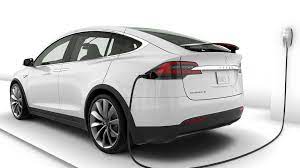Tech Evolution: Electric Cars Leading the Way

What Are Electric Cars?
An electric car(EC) is essentially an autonomous vehicle powered by an electric motor. Fully electric car do not use or come with a gasoline or diesel engine. With electric cars, when you put the car into “Drive” mode, the vehicle accelerates like an automatic car. Electric or hybrid cars don’t have gears. They are all fully autonomous cars.
When the accelerator is depressed, power is transferred from the battery to the electric motor. The electric Cars is driven, causing the drive shaft to turn the wheels. When the car brakes, the car begins to slow down and the electric motor becomes an alternator, generating electricity. This power is then sent back to the battery
What Are The Different Types of Electric Cars?
When it comes to electric vehicles (EVs), the options extend far beyond cars powered solely by batteries.
Car buyers can now choose from a variety of options, including those that use fuel cells or combine gas engines in hybrids and plug-in hybrids.
We will discuss four traditional electric cars: standard electric cars, also known as battery-powered electric cars(BEC); hybrid electric cars (HEC); plug-in hybrids (PHEV) and fuel cells Electric cars (FCEC)
Battery Electric Car (BEC)
BECs are also known as plug-in or battery electric vehicles. They use electric motors and run solely on batteries, meaning they produce zero emissions while driving.
Pure electric vehicles can be charged using a standard electrical outlet at home or at a public charging station. Car manufacturers also offer fast charging outlets that can also be installed at home by a qualified electrician to charge your car faster.
Pure electric vehicles can also obtain some power through regenerative braking systems. This means that the kinetic energy generated by braking is converted into electrical energy that can be used to charge the car.
Main parts of pure electric cars:
- Battery
- Control module
- Transmission system
- electric motor
- Inverter
How pure electric cars work:
- For electric motors, power is converted from direct current (DC) batteries to alternating current (AC).
- The accelerator pedal sends a signal to the controller, which modifies the frequency of AC power flowing from the inverter to the motor to regulate the vehicle’s speed.
- The motor is connected to the wheel through gears and causes it to rotate.
- When braking or the electric car slows down, the motor turns into an alternator and generates electricity, which is then returned to the battery.
Pure electric vehicle example
Here are some examples of BEC:
- Tesla Model 3
- TeslaX
- Toyota Rav4
- BMW i3
- Karma Revilla
- Kia Soul
Hybrid Electric Cars (HEC)
Hybrid cars use a combination of gasoline or diesel and battery power. It combines a conventional internal combustion engine (ICE) with an electric motor. These cars cannot be plugged in to charge. Like pure electric vehicles, hybrid vehicles use a regenerative braking system to charge the battery. While you still need to fill up with gas, each tank of gas will get you further than a comparable gas car.
Main components of a hybrid car:
- Battery pack with controller and inverter
- Control module
- Engine
- electric motor
- Fuel tank
How hybrid electric cars work:
- Similar to a standard car with a fuel tank that delivers gas to the engine.
- It also contains a battery pack that powers the electric motor.
- The engine and electric motor can turn the transmission simultaneously.
Hybrid electric vehicle example
- Toyota Prius Hybrid
- Toyota Camry Hybrid
- Honda Civic Hybrid
Plug-in hybrid electric cars(PHEC)
Similar to hybrid vehicles, plug-in hybrids are powered by a combination of gasoline or diesel fuel and battery power. The main difference is that you can also charge the battery using a standard power outlet at home or at a public charging station. Plug-in hybrid vehicles can travel greater distances using only batteries. When the battery power drops, the gasoline or diesel engine will be used.
Main components of plug-in hybrid cars
- Battery
- Battery charger (if onboard model)
- Control module
- electric motor
- Engine
- Fuel tank
- Inverter
How plug-in hybrid cars work
- Plug-in hybrids typically start in full electric mode and run on energy until the battery pack is depleted.
- Some models switch to hybrid mode when they reach highway cruising speeds of 60 or 70 miles per hour.
- When the battery is depleted, the engine starts and the car operates as a standard non-plug-in hybrid.
- In addition to being connected to an external power source, the PHEV battery can be charged via the internal combustion engine or regenerative braking.
- During braking, the electric motor acts as a generator, transferring energy to the battery. Because the electric motor supports the engine’s power, a smaller engine can be used, improving fuel efficiency without sacrificing performance.
Plug-in hybrid electric car example
- Porsche Cayenne S E-Hybrid
- BMW 330e
- Porsche Panamera S E-hybrid
- Mercedes GLE550e
- Hyundai Sonata
- BMW X5 xdrive40e
Plug-in hybrids also use regenerative braking systems to recharge their batteries.
Hydrogen or fuel cell electric cars (FCEC)
FCEVs convert fuel into energy through electrochemical reactions with hydrogen and oxygen. The electricity this produces powers an electric motor.
Fuel cell electric cars (FCEC), also known as fuel cell cars(FCC) or zero-emission vehicles, are electric vehicles that use “fuel cell technology” to generate the electricity required by the vehicle.
In this vehicle, the chemical energy of gasoline is converted directly into electrical energy
FCEC main components
- Batteries with converter and controller
- Hydrogen storage tank
- electric motor
- Fuel cell stack
How fuel cell electric cars work
- “Fuel cell” electric vehicles operate differently from “plug-in” electric vehicles.
- This electric vehicle exists because FCEV generates the electricity needed to power the vehicle.
Fuel Cell Electric Car Example
- Hyundai Tucson FCEV
- Honda Clarity Fuel Cell
- Riversimple Lhasa
- Toyota Future
- Hyundai Nexo
How do electric engines work?
Unlike gasoline-powered vehicles, electric vehicles (EVs) do not require an internal combustion engine to operate. Electric vehicles are equipped with electric motors and rechargeable battery packs that allow them to travel on the road without burning gasoline or producing harmful exhaust emissions while producing less noise pollution. Here’s a basic overview of how an electric car works: An electric car receives energy from a charging station and stores it in a battery. The battery powers the motors that drive the wheels. Many electrical components work together in the background to achieve this movement
Electric vehicles work by plugging the car into a charging point. Like all electrical devices, it then begins drawing power from the grid and charging the car. The car stores electricity in a rechargeable battery, which then powers an electric motor that turns the wheels like a regular gas engine. Electric cars accelerate faster than cars with conventional gas engines, so they feel lighter to drive because there are no gears to go through.
What does an electric cars driving range look like?
No two electric cars models are the same! While some manufacturers will share battery technology, many other factors come into play once the batteries are installed in a car’s chassis. How far you can travel on a full charge depends on the vehicle and several other factors. Each model has a different range, different battery sizes and different efficiency ratings. The best electric car for you will be one that you can use for normal travel and where charging is not a long-term issue. We 100% believe that everyone will be driving an electric car in the near future and luckily, here in Windsor we work with Ireland’s leading electric car brands so we have an electric car to suit your requirements.
Different types of electric cars chargers
There are three types of plug-in electric vehicle and hybrid chargers. Slow, fast, fast.
slow charger
Slow chargers are standard 3-pin plug sockets commonly found in Irish homes. These are best for overnight charging. They have an output of up to 3kW and are commonly used for home charging. Slow chargers typically take 6 to 12 hours to fully charge an electric car, while plug-in hybrids require 2 to 4 hours.
fast charger
Fast chargers are standard outdoor electric vehicle chargers. It offers a power output of 7 to 22 kW and can typically fully charge an electric vehicle in 3 to 4 hours. The fast charger connector connects to two types of outlets, depending on your vehicle.
There are two types of fast chargers. AC and DC. The AC fast charger will provide a power output of 43kW, while the DC fast charger will provide a power output of at least 50kW. Both chargers can charge an EV battery to 80% in around 30 – 60 minutes, depending on battery capacity.
How long does it take to charge an electric car?
The time it takes to charge an electric vehicle depends on several factors. The charging rate of the type of charger used plays an important role, as standard 110V household chargers, professionally installed units and public fast chargers all work at different speeds.
The vehicle’s battery capacity and maximum charge rate also affect overall charging time. For many electric vehicles, such as some models of the Nissan Leaf, an 80% charge can be achieved in an hour using a fast charging station.
While calculating how long it takes to charge an electric car can seem complicated, this guide can simplify the process. Below, we take a closer look at the various factors that affect the time it takes to charge an electric vehicle battery.
Factors affecting the charging speed of electric vehicles
Several factors affect how quickly an electric vehicle can charge, meaning there’s no one-size-fits-all answer. However, the speed of the charging system used, the battery capacity of the EV, and environmental factors such as temperature can all affect overall charging time.
- Charging system
Whether you’re charging at home or at a public fast-charging station, it’s important to remember that each charger will power your vehicle at a different rate. Generally speaking, higher grade chargers will provide faster charging times.
Level 1 charging
Level 1 charging is suitable for home charging, and most electric vehicles come with a basic Level 1 charging cable. The cables draw power from a common 120-volt outlet and can add 2 to 5 miles of range per hour of charging. Based on a 40kWh battery, the estimated time required to charge an electric vehicle using a Level 1 charger ranges from 28 hours to more than 2 days.
Level 2 charging
Level 2 chargers are used in homes and public charging stations, but residential Level 2 charging requires professional installation. The units draw power from a 240-volt outlet and can add 10 to 25 miles of range per hour of charging. Therefore, charging an electric vehicle from empty to full takes much less time than Level 1 charging. The 40 kWh battery can be fully charged in 7.5 hours.
fast charging
Public fast charging stations use direct current (DC) power for rapid charging and are only compatible with certain electric vehicles, including some models of the Nissan Leaf. Based on a 40kWh battery, a 50kWh fast charger can replenish 80% of the electric vehicle’s power in about 40 minutes. A 100 kWh fast charger can charge the 62 kWh battery to 80% in approximately 45 minutes.
- Battery capacity
The battery capacity of an electric vehicle also affects charging time. Generally speaking, smaller capacity batteries take less time to charge, while larger capacity batteries take longer to charge.
However, batteries with increased capacity provide greater range and require less power.
- Maximum vehicle charges
Just like there are limits on rates based on specific charging points, the maximum charging rate each vehicle receives also affects how quickly it receives power. Regardless of the charger used, electric vehicles will only charge at the highest charging rate.
- Environmental factors
Outdoor temperatures can also affect how quickly an electric vehicle charges, as batteries are sensitive to extreme heat and cold. To avoid damaging the battery, the battery management system of electric vehicles automatically slows down charging when it detects extremely high or low temperatures.
Stored value charging
Many drivers in the United States have probably used the term “fill up the tank,” meaning they fill up their tank even if it’s not even close to empty. Well, in other English-speaking countries like the UK, they often use the word “top up”. Since then, “Top up” has been adopted by the electric vehicle community, which means charging the vehicle.
How to charge an electric car
Charging electric vehicles requires a connection to the power grid and can be done at home or at a commercial charging station.
The three main ways to charge an electric vehicle are:
- Level 1 charging
Level 1 home charging uses a 120-volt outlet and requires no special equipment, but it has the slowest charge cycle compared to dedicated EVSE. This charging method allows an electric vehicle to travel between 2 and 5 miles per hour of charge.
- Level 2 charging
Level 2 charging using a 220 or 240 volt outlet requires a dedicated device at home or the use of a public charging station.
Also suitable for all pure electric vehicles. This EVSE is much faster than a Level 1 charger, compatible with all plug-in vehicles, and can travel 10 to 25 miles per hour of charge.
- DC fast charging
This special EVSE converts alternating current to direct current within the charging station, delivering energy to the electric vehicle’s battery pack faster than Level 1 and 2 chargers. These fast charging stations can charge traction battery packs in 15 to 45 minutes
What are the components of electric vehicles called?
Electric vehicles have 90% fewer moving parts than gasoline or diesel vehicles. Petrol and diesel cars are also known as ICE (Internal Combustion Engine) cars. Here’s a brief breakdown of the main components that keep an electric vehicle running:
- Electric engine/motor – provides the power to turn the wheels. It can be a DC/AC type, but you’ll find that AC motors are the most common.
- Inverter – Converts electrical current in the form of direct current (DC) to alternating current (AC)
- Drivetrain – All electric vehicles use a single-speed transmission, which then sends power from the motor to the wheels.
- Battery – stores the electricity needed to operate the car. The higher the battery kW, the higher the cruising range.
Charging – this is where your plug entry is, which you can then connect to an outlet or electric vehicle charging point to charge your battery
Benefits of driving an electric car
- 1. Clean up the Earth
With an electric vehicle, you can reduce smog pollution around you now and reduce greenhouse gas emissions to protect people and the planet for years to come. Future generations will thank you.
- solo electric vehicle driving
One coveted benefit of solo electric vehicle driving in rideshare lanes is that single drivers can access most rideshare (or HOV) lanes throughout California, thanks to the Clean Air Vehicle (CAV) program .
- Environmental and health benefits
In all-electric mode, electric vehicles can achieve zero exhaust emissions, significantly reducing smog and greenhouse gas emissions even when generating electricity is considered
- Save fuel and maintenance costs
Drive to where you want to go for a fraction of the cost.
fuel cost
In California, charging an electric cars for the same distance costs about half as much as charging a standard gasoline vehicle. Most drivers charge their electric cars at home overnight and wake up with a full charge. With the proliferation of workplaces and public charging stations, you’re never far from charging. Check public charges using the app or online map. Currently, most hydrogen fuel cell vehicles come with the added bonus of three years of free fuel from hydrogen car manufacturers. Learn more about hydrogen fuel.
Repair fees
Electric motors have far fewer moving parts and require no oil changes, new spark plugs, or fuel filters. Regenerative braking also extends the life of the brake pads by using an electric motor to slow the vehicle down. This often means lower overall maintenance costs and increased savings. Our EV overview takes a deep dive into the various benefits of different EV types.
utility rates
Many electric companies offer special time-of-use rates that vary based on the time of day the energy is used. Charging costs are much lower during off-peak hours, and electric vehicles can be programmed to charge when you need them. Combining these lower rates with the simplicity of charging an electric vehicle can result in significant fuel savings. Read driver reviews to find out how current drivers like their cars.









